Bedrooms
February 1, 2018
DIY: Budget-Friendly Wallpaper Headboard
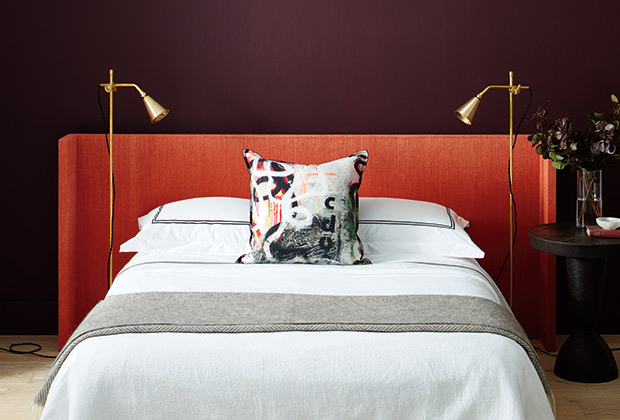
Joel Bray creates a handsome headboard using hollow-core doors and textured wallpaper.
 Grasscloth wallpaper is a decorating favorite for a reason: its natural texture and distinctive colors add an instant hit of style to any space. But papering a whole room (or even a feature wall) in this luxe material can be expensive. I love this project because it’s a cost-effective way to work with grasscloth — I used just one roll and two hollow-core doors I found at Habitat for Humanity for $10 each — and it brings rich color to the bedroom.
Grasscloth wallpaper is a decorating favorite for a reason: its natural texture and distinctive colors add an instant hit of style to any space. But papering a whole room (or even a feature wall) in this luxe material can be expensive. I love this project because it’s a cost-effective way to work with grasscloth — I used just one roll and two hollow-core doors I found at Habitat for Humanity for $10 each — and it brings rich color to the bedroom.

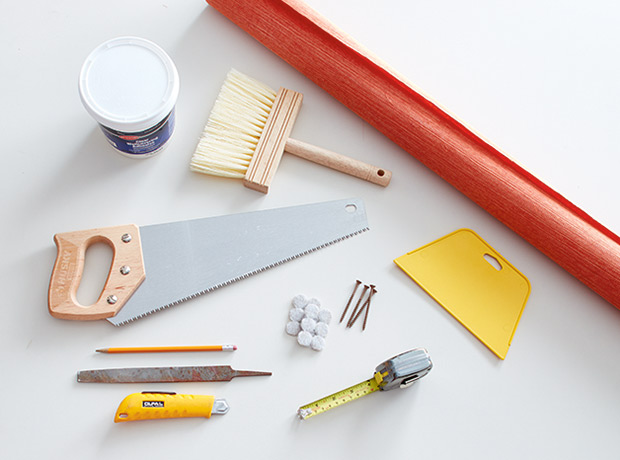
You’ll need two 80″ x 36″ hollow-core doors, grasscloth wallpaper, handsaw, utility knife, wallpaper brush, wallpaper paste, measuring tape, ruler, pencil, wood file, four 3″ screws, felt pads and a power drill.
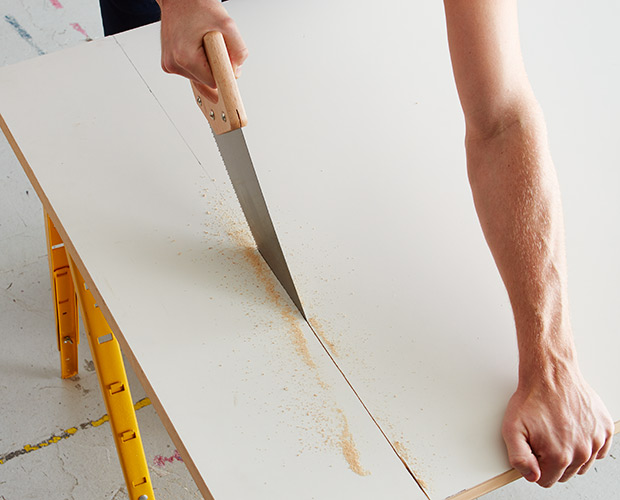
Measure 8″ from the top and bottom of one door, marking lines across the width of the door with a pencil. Using a handsaw, cut off the two 8″ pieces and discard the rest. With a hand file, sand down the edges until smooth. (The second door, when positioned horizontally, will serve as the main body of the headboard and doesn’t require trimming.)
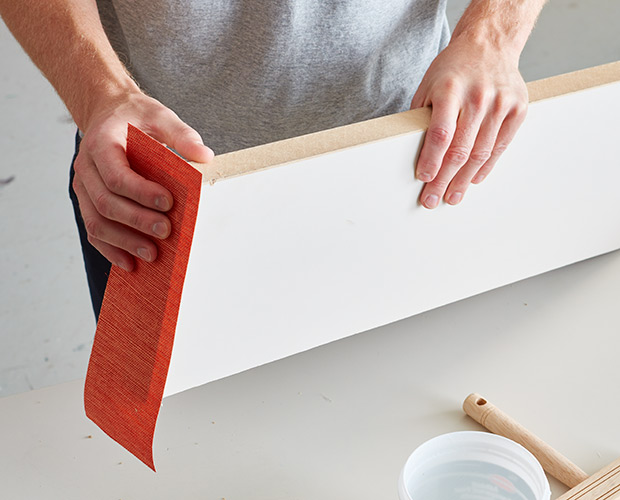
Measure the top of one headboard wing (the edge visible from above). Add 2″ to the dimensions to ensure the top will be fully covered, then, using a utility knife, cut a strip of wallpaper to size. Lay the wallpaper on a flat surface, grasscloth side down. Using a wallpaper brush, apply a liberal, even layer of wallpaper paste. Adhere the grasscloth to the edge of the wing, running the grain vertically and keeping it centered as much as possible. Repeat the steps for the second headboard wing and the long, top edge of the second door.
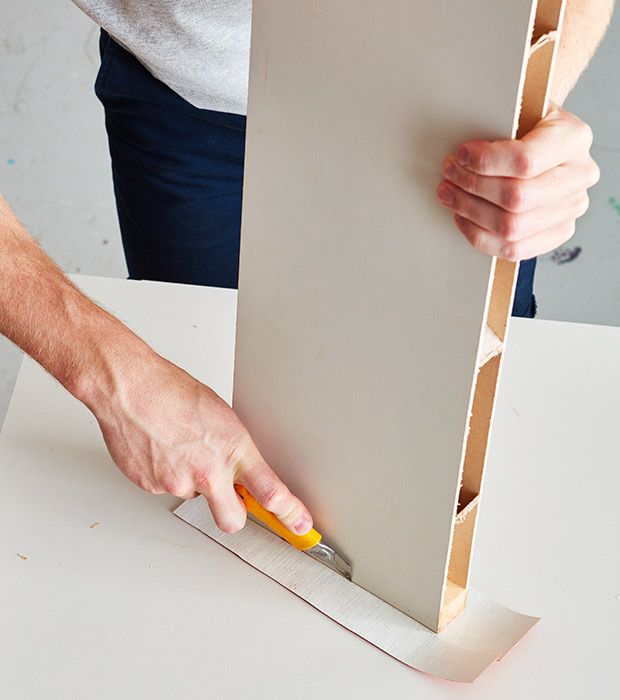
Allow glue to dry for 4 to 6 hours or until the grasscloth has completely stiffened. Once dry, use a utility knife to trim the excess wallpaper so that it fully covers the top edge of the two wings and the headboard for a precise finish.
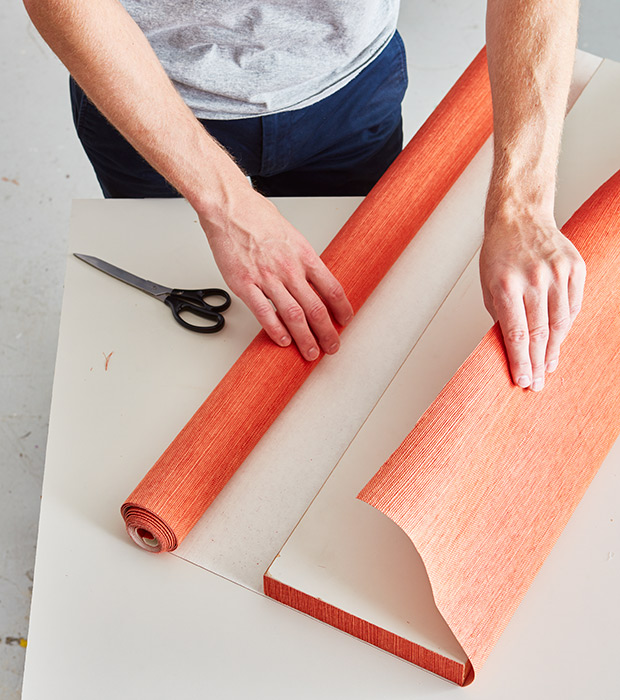
Measure the remaining surface of each wing. Add 2″ to the dimensions, then cut the wallpaper to wrap around each panel. Apply wallpaper paste and adhere the grasscloth to each wing. Repeat to cover the headboard (though you don’t need to fully paper the back of this panel — it will face the wall). Allow the glue to dry for 4 to 6 hours, then trim the excess wallpaper.

To prevent the headboard from scratching the floor, attach felt pads to the underside of the headboard and wings. I applied two pads to the bottom of each wing and five to the bottom of the main body of the headboard.
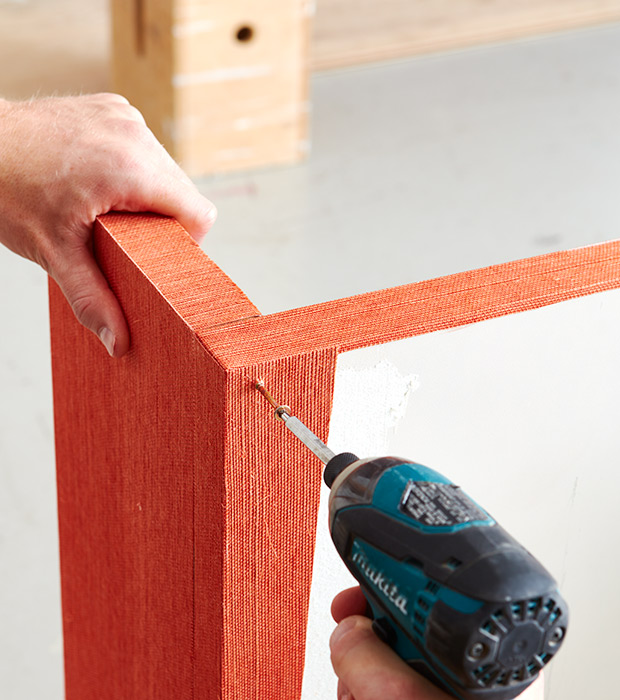
Using a power drill and two screws per side, attach the wings to the top of the headboard at 90-degree angles. For stability, make sure you drill just 1″ from the outside edge on each side (the rails around the perimeter of a hollow-core door are solid wood). This headboard is intended to be freestanding, but it can be attached to a metal bedframe with bolts, if desired.
Angus Fergusson
House & Home December 2017
Joel Bray

